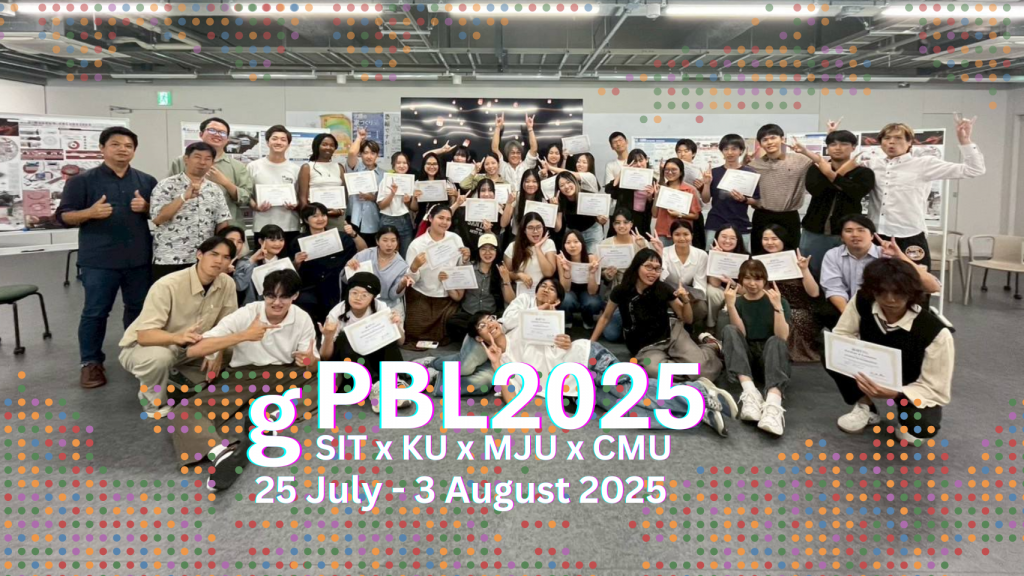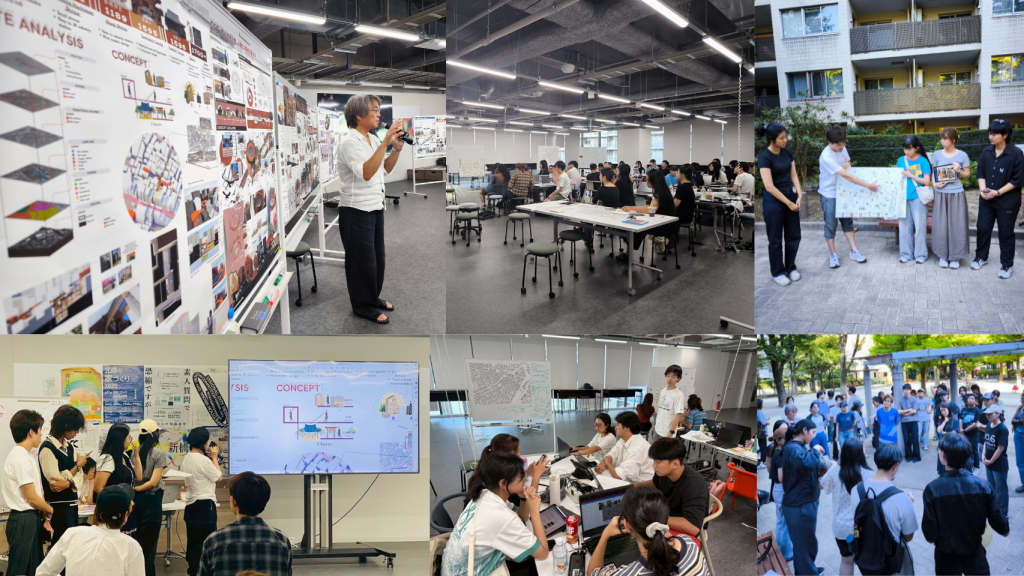
(English scroll down)
การนำเสนอผลงานครั้งสุดท้ายของ gPBL 2025 ณ กรุงโตเกียว – ชีวิตและมรดกในคางุราซากะ
กิจกรรม Global Problem-Based Learning (gPBL) 2025 ในปีนี้จัดขึ้นโดย Shibaura Institute of Technology (SIT) ร่วมกับ มหาวิทยาลัยเกษตรศาสตร์ (KU), มหาวิทยาลัยเชียงใหม่ (CMU) และมหาวิทยาลัยแม่โจ้ (MJU) โดยมีธีมหลักคือ Eco Museum in Kagurazaka เพื่อเปิดพื้นที่ให้นักศึกษานานาชาติได้เรียนรู้ผ่านประสบการณ์จริงและการออกแบบเชิงพื้นที่ที่สะท้อนคุณค่าทางวัฒนธรรมและวิถีชีวิตของชุมชน
ตลอดระยะเวลาที่ผ่านมา นักศึกษาจากหลากหลายชาติได้ร่วมกันลงพื้นที่ เดินสำรวจ ซึมซับบรรยากาศ และสัมผัสกับเรื่องราวของย่านคางุราซากะ ผ่านการพูดคุยกับชุมชน การเก็บข้อมูลพื้นที่ และการสังเกตชีวิตประจำวัน ก่อนจะแปลงข้อมูลที่ได้มาสู่กระบวนการออกแบบและนำเสนอผลงานในรูปแบบของพิพิธภัณฑ์เชิงนิเวศน์ (Eco Museum) ที่เชื่อมโยงผู้คน พื้นที่ และความทรงจำ
ทั้งหกกลุ่มนำเสนอแนวคิดที่หลากหลาย สะท้อนให้เห็นถึงจินตนาการ ความเข้าใจเชิงลึก และความเคารพต่ออัตลักษณ์ของชุมชน ไม่ว่าจะเป็นการตีความตรอกซอย การใช้พื้นที่สาธารณะ หรือความสัมพันธ์ระหว่างคนกับสถานที่ ล้วนถ่ายทอดออกมาอย่างสร้างสรรค์และจริงใจ
ขอขอบคุณจากใจถึงนักศึกษาทุกคนที่ทุ่มเทแรงกายแรงใจ คณาจารย์จากทุกมหาวิทยาลัยที่ร่วมกันผลักดันและสนับสนุนตลอดโครงการ ตลอดจนเจ้าหน้าที่และพันธมิตรในพื้นที่ที่เปิดโอกาสให้เยาวชนได้เรียนรู้จากของจริงอย่างลึกซึ้ง
นี่ไม่ใช่เพียงแค่วันสิ้นสุดของกิจกรรม แต่คือจุดเริ่มต้นของมิตรภาพ ความเข้าใจ และแรงบันดาลใจที่นักศึกษาจะนำกลับไปพัฒนาชุมชนและโลกในแบบของตนเอง

Final Presentation of gPBL 2025 in Tokyo – Life and Heritage in Kagurazaka
This year’s Global Problem-Based Learning (gPBL) 2025 was hosted by Shibaura Institute of Technology (SIT) in collaboration with Kasetsart University (KU), Chiang Mai University (CMU), and Maejo University (MJU). Under the theme Eco Museum in Kagurazaka, the program offered students from multiple countries a chance to learn through real-world engagement and site-based design reflecting cultural values and everyday life in the community.
Over the course of the program, students explored the historic district of Kagurazaka—walking its streets, engaging with locals, and absorbing its atmosphere. Through close observation and dialogue with the community, each group developed a design concept that reimagines how everyday life and cultural memory can be communicated through an eco-museum approach.
All six teams presented diverse and creative ideas, reflecting deep insight and sensitivity to the unique identity of the place. Their works explored themes such as alleyways, shared spaces, and people-place relationships, each capturing the rhythm of life in Kagurazaka in their own way.
A heartfelt thank you to all students for their dedication, to the faculty of all institutions for their guidance, and to all local collaborators and supporters who helped create such a rich and meaningful learning environment.
This final presentation is not the end, but the beginning—of new friendships, mutual understanding, and future possibilities that each participant will carry forward.
















